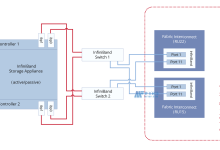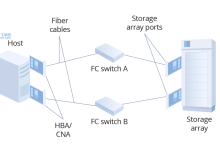Introduction
In recent years, solid-state drives (SSDs) have become a popular choice for computer users due to their increased performance, durability, and compatibility benefits over traditional hard disk drives (HDDs). This article explores the performance and compatibility benefits of using SATA hard drives in linux systems.
Background
Serial ATA (SATA) is a computer bus interface that connects host bus adapters to mass storage devices such as hard disk drives and solid-state drives. Linux is a free and open-source operating system that is widely used in servers, embedded systems, and desktop computers.
Performance Benefits of SATA Drives in Linux
SATA drives offer several performance benefits over older IDE (Integrated Drive Electronics) drives. These include:
Faster Data Transfer Rates: SATA drives offer faster data transfer rates than IDE drives, which allows for greater performance and improved data access times.
Improved Error Correction: SATA drives offer improved error correction features, which helps to prevent data loss and improve system stability.
Native Command Queuing (NCQ): SATA drives support NCQ features, which help to optimize the disk’s internal algorithms to improve disk accesses, minimizing system delays.
Compatibility Benefits of SATA Drives in Linux
SATA drives offer several compatibility benefits over older IDE drives, including:
Hot Swapping: SATA drives support hot swapping features, allowing users to replace a drive without restarting their system or shutting down applications.
Greater Capacity: SATA drives offer greater capacity than older IDE drives, allowing users to store more data on a single drive.
Compatibility with Newer Systems: SATA drives are compatible with newer systems such as Intel and AMD-based systems, while older IDE drives may not be.
Implementing SATA Drives in Linux
To implement SATA drives in Linux, follow these steps:
1. Determine the type of SATA interface: SATA drives come in different versions, so it’s essential to determine the type of SATA interface used by the drive. SATA 3 (6Gb/s) is the latest version, offering the fastest data transfer rates.
2. Check Linux compatibility: SATA drives are generally compatible with most modern Linux distributions, but it’s always a good idea to check compatibility before purchasing a new drive.
3. Install the SATA drive: Physically install the SATA drive into your system, making sure to secure the drive properly.
4. Configure the system: The system may need to be configured to recognize the new drive. This can be done using Linux utilities such as fdisk or parted.
Conclusion
SATA hard drives offer several performance and compatibility benefits over older IDE drives when used in Linux systems. With faster data transfer rates, improved error correction, NCQ, hot-swapping features, and greater capacity, SATA drives are a superior choice for Linux users. By following the steps outlined in this article, you can implement SATA drives into your Linux system, improving performance and compatibility.
Example code:
sudo fdisk -l #list all disks on your system
sudo fdisk /dev/sdb #create a new partition on the SATA drive
sudo mkfs.ext4 /dev/sdb1 #format the new partition in the EXT4 format
sudo mount /dev/sdb1 /mnt/sata #mount the new partition to the /mnt/sata directory.

 国外主机测评 - 国外VPS,国外服务器,国外云服务器,测评及优惠码
国外主机测评 - 国外VPS,国外服务器,国外云服务器,测评及优惠码












